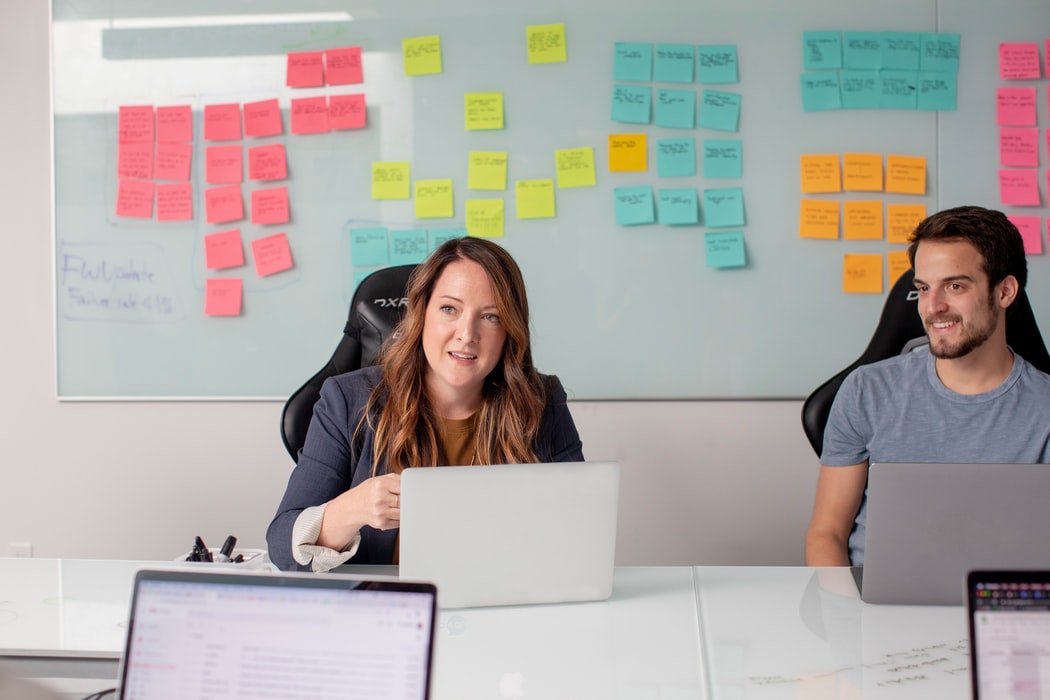View our Guide How to Build a Marketplace in 10 weeks x

In the fourth episode of our podcast, we are talking to GreenPal CEO Bryan Clayton about the development of his product. It is an online marketplace that connects homeowners with lawn care professionals for seamless service exchange. Enjoy!
Dana Kozubska (D.K.) - Hello everyone! Please meet our guest Bryan Clayton. Hi Bryan, it’s great to talk to you.
Bryan Clayton (B.C.) - Hi, sounds good! Thanks for having me on, Dana.
D.K.: Can you tell us about your product, GreenPal marketplace?
B.C.: Sure, so GreenPal is like Uber for lawn mowing. Let’s say you have a house with a lawn. Somebody has got to cut the grass to keep it short. GreenPal enables the homeowner or a renter to hire a lawn mowing service in a matter of minutes. Normally you would have to call these people and figure out their schedule, prices. You would have to leave voicemails or emails.
Instead, GreenPal enables you to get quotes quickly, read reviews, and hire a specialist as simple as ordering an Uber. And after the work is done, you will get a picture of the completed lawn. If the result satisfies you, you can hire that person for the rest of a lawn mowing season. So, it’s a great way for homeowners to save time and money. In turn, service providers use the platform to operate their business and grow it.

D.K.: Great, thanks. How did you come up with this idea? Because usually you have to do some market research or find the gaps in user needs. How did you come up with that?
B.C.: I think, when you’re starting a new business, it’s a good idea to solve your own problem and fix something that is wrong with the world, in your opinion. In my case, I started mowing grass in high school to make extra money. At the age of 20, I grew my lawn mowing business into a real landscaping company. We had over 150 employees and over $10 million in revenue over 15 years.
At that time, I saw how difficult it was for lawn mowing businesses to operate efficiently and how difficult it was to connect with homeowners in their neighborhood.
"[Lawn care specialists] ..didn’t have any way to reach their customers. So, seeing this problem on a daily basis enabled me to see how technology can make this easier for both sides of this transaction. Therefore, the idea of GreenPal was very obvious to me."
- Bryan Clayton
We started the company 7 years ago with 2 co-founders. The platform counts over 200 000 homeowners - users today in the USA.
D.K.: That’s splendid! In which U.S. state did you start?
B.C.: Nashville, Tennessee. We stayed in our downtown for three years to make the service work, figuring out the best features, design, making it reliable and cost-effective. Only then we could expand to other US cities. And now, we are nationwide in the United States.
D.K.: Congrats on that! Speaking about technology, can you tell our readers how you came up with the best solution to implement it? Did you consult a technical partner, or did you choose the right technology by yourself?
B.C.: It’s a great question, as my first business was a traditional one, it didn’t use any technology at all. So, starting my second business, which is a technology-enabled marketplace, I had to learn how to build software.
At first, I was very naive. But that actually got me started because I didn’t know how hard it would be. We began by paying a development agency in Nashville $150 000 to build the first version of GreenPal. We expected to be up and running quickly.
But, the first product version turned out to be a total failure. It was hard to use, and it didn’t really solve the problem. This experience taught us that we need to have tech expertise ourselves to succeed. So we started to self-educate intensely on the back-end and front-end technologies. My co-founder went to a Ruby-on-Rails Bootcamp. We spent years learning while working on our business at the same time. The first 3 or 4 years were mostly exercise and faith.
Learn how we helped our customer to build a robust online marketplace for real estate.
D.K.: That's very important to hear. Talking about tech aspects, did you decide to change some technology later? Are there some mistakes that you would like to share?
B.C.: The first mistake was trying to outsource everything before even figuring out how to do it ourselves. That’s why the first version was in PHP because the lead developer of the agency was the expert in PHP.
However, the only Bootcamp in Nashville was teaching Ruby on Rails. It meant that we could learn this technology. So we had to rebuild it in Ruby on Rails. That was a huge mistake to start building with a technology that we couldn’t master ourselves.
Another mistake is trying to launch a mobile native app too soon before we even had the prototype of our product. We didn’t know what the interface would be and didn’t know what worked. So we wasted two years on making the web and mobile versions, while we should have focused on the web platform first. It was easier to build for us. Trying to scale too quickly was a mistake.
"Trying to scale too quickly was a mistake. You have to plan very carefully how you spend your time and what you focus your effort on." - Bryan Clayton
D.K.: Ok, thank you for sharing your experience. Your platform connects customers with the right lawn care professionals by checking their skills. Can you explain how it works?

B.C.: Of course. Every time a lawn mowing company or person wants to offer its services on our platform, it goes through a series of checks to make sure that they are in business and that they’ll do a good job.
We verify if they have the proper professional-grade lawn mowing equipment. Next, we ask for the background references of other customers. Then, they have to upload the ID and go through a bank check before receiving payments on our platform. These verification processes apply to every service provider to make sure they are legit. Therefore, customers get detailed information that they wouldn’t necessarily get via other platforms.
Afterward, we accumulate reviews about them, data on how often they show up on time, and other statistics. That's how we reveal who’s doing a good job and who is not. And those who don’t do their job, or don’t offer a good experience to the homeowners are expelled from the platform.
D.K.: Sounds like a great experience to be a user of your platform. Can you also share what challenges you faced when entering the market? Were there some similar products already, or were you the first one?
"We are the only platform like this in the world. But we still compete with the old way of doing things. Unfortunately, lots of people still do it the hard way. They ask their friends for recommendations, search on Facebook. So this is the point of competition we face since we have to grow our brand awareness in the United States." - Bryan Clayton
What we’re working on today is trying to let people know that this is the easiest way to get this service done.
D.K.: Very interesting. What monetization model did you choose for your platform, and why?
B.C.: We combine two things: first, service providers pay a small subscription fee to access the marketplace. And secondly, we charge a small transaction fee for every service that they do on our marketplace. So they only pay when they have a successful transaction. So, if they win, the platform wins, and vice versa. It keeps everyone aligned in terms of goals.
D.K.: That’s nice. What changes do you see in your market of online marketplaces with the pandemics spread? How has it affected your product?
B.C.: A lot of online marketplaces benefited from the current situation. Services like UberEats, Uber, DoorDash are having their record years. So we are riding the wave of this contactless ordering as well.
"We repositioned the way we message the product as a contactless way to hire the lawn mowing service, instead of meeting face to face with a person or walking around the property." - Bryan Clayton
D.K.: Sounds like the future of this service. Did you use any open-source software & ready-to-use solutions to develop your platform, or did you build everything from scratch?
B.C.: We didn’t use Sharetribe or anything like that. We built it from scratch. And if I had to develop it all over again, I would still create everything from scratch. After all, every vertical will have its own set of needs, and you have to build your own tools to serve those users. However, those open-source platforms are viable choices to validate the idea if you don’t know if it will work or not.
You may also like: Four ways to build a peer-to-peer marketplace
D.K.: Ok, I see. I would also like to know, how did you find your first users? Because it may be difficult to find your first customers.
B.C.: When we launched our first version, we didn’t have any user acquisition strategy. So we passed around 200 000 flyers all over our city, to start. Once we got 200 to 300 users, we conducted interviews with them. We had to learn whether or not the platform solves their problem and answers their expectations.

After that, we had to find a scalable way to attract users and chose organic search. So now, we focus a lot of effort on competing in organic search [ranking]. To make sure that once someone is looking for a lawn mowing service in their town, Green Pal pops out as an option.
One-half of our users still come from organic search. The other comes from word of mouth.
D.K.:I believe organic search can be really efficient in the industries like yours. And what are your next plans?
B.C.: Besides that we are present in all the major cities in the US, we want to expand to the small towns as well. After that, we want to expand to Canada, UK, Australia, and then throughout Europe. We plan to work on our marketplace idea 5, 10 years from now.
D.K.: And the last question: what advice would you give to tech startuppers who are just starting with their ideas?
B.C.: Obviously, less time planning, more time doing. Validate the idea as we mentioned with Sharetribe. And lastly, realize that it will take three to five years before you have anything. Don’t give up, but also don’t get started on any tech product unless you are willing to dedicate 5 to 10 years to it cause that’s how long it will be. It’s a lot of work.
D.K.: Definitely. Thank you, Bryan, for this interview and your time.
B.C.: Thanks for inviting me.
and get the latest updates